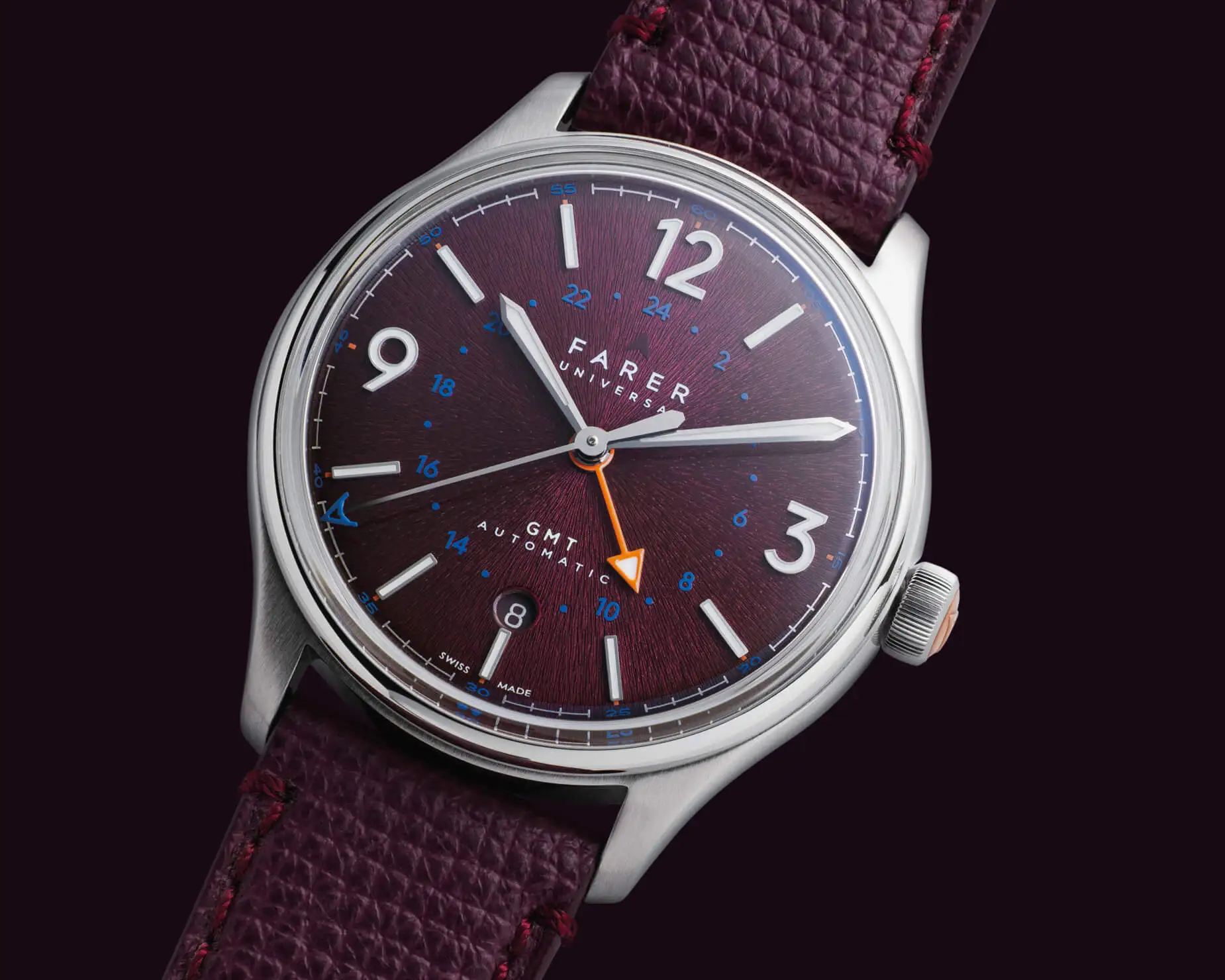The Farer GMT family welcomes a new limited edition member to its ranks this week with the release of the new Banzare GMT. Farer has proven quite adept at exploring small details that have a big impact, pushing the diversity of their designs in new and surprising ways. The new Banzare GMT uses a familiar case and movement, but boasts a new dial with an intricate execution and color scheme. The result is a watch that pushes Farer into new territory, and will hopefully open the door to additional non-limited examples to come.

The Banzare GMT looks familiar at a glance, but reveals more surprising details the longer you look. From the onset, the Farer’s distinctive design DNA is immediately apparent. The graphic dial uses large applied numerals at 3, 9, and 12 o’clock done in their own modern typeface, and brings together a trio of colors in a subtle way. The personality is big but well considered, practicing enough restraint to enjoy a bit of intrigue. Up close, there’s plenty to explore here.
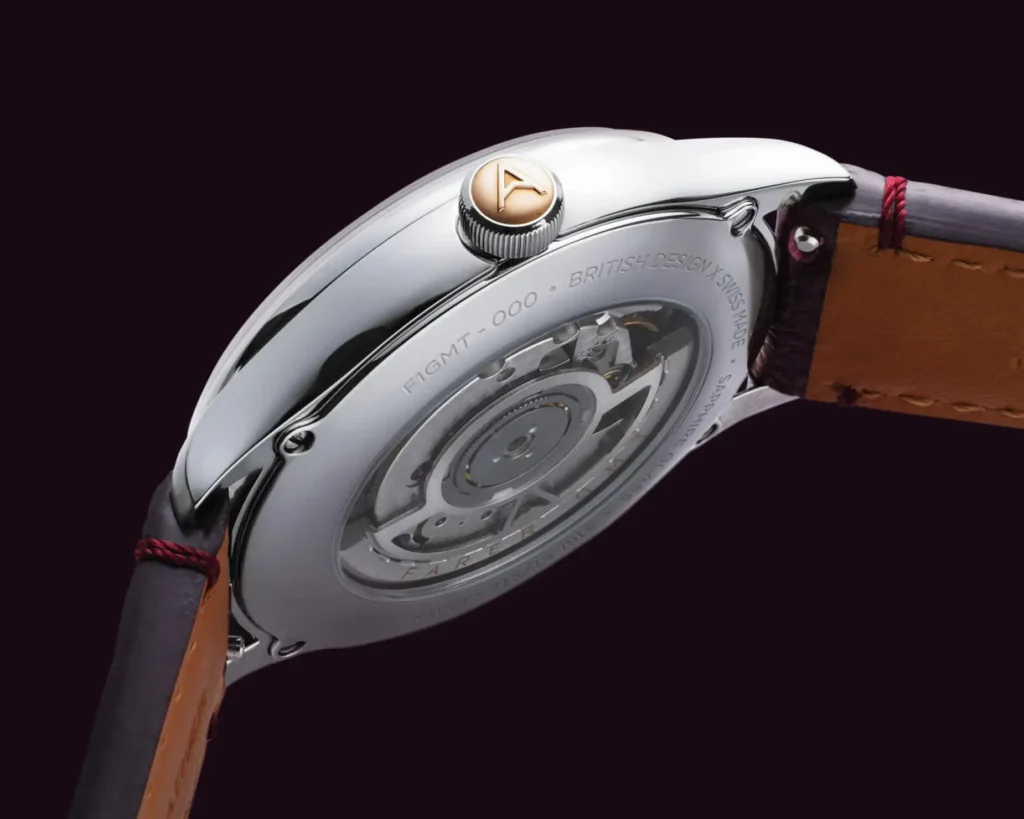
Farer are using a new dial technique that involves a deep ridged sunburst texture that’s been stamped into a dial plate. The texture gets more dramatic the closer you view it, but blends into a texture driven affair from afar. This is largely thanks to the layer of transparent enameled polished lacquer that’s been applied over the top of the texture. This will give the dial a different look and feel from a variety of angles, without compromising the texture that’s been achieved. That texture is only part of the story, as the color is the other element that brings this to life.
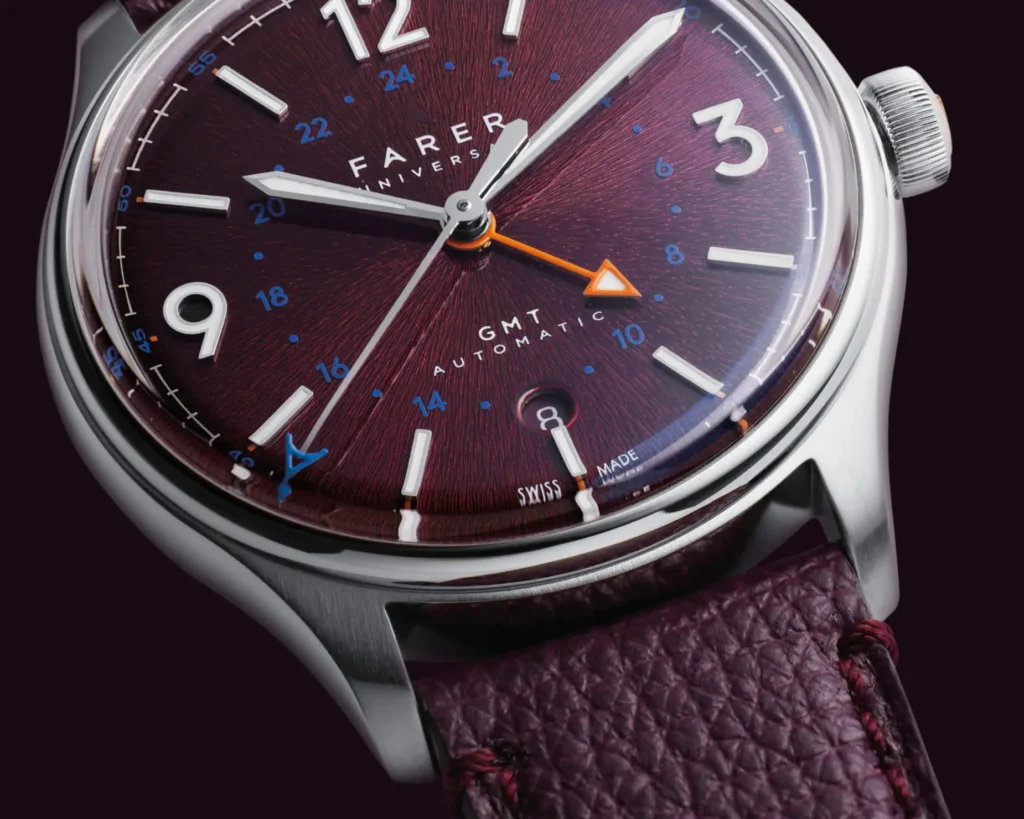
The dial is a deep, rich purple that can shift between plum or eggplant, to warmer mulberry in appearance depending on the angle. Purple may sound like a scary proposition, but it’s done in a manner that feels approachable here, and in a way that might work across most of your wardrobe. The 24 hour scale on the inner portion of the dial is rendered in blue, while the 24 hour hand itself is bright orange with a white lumed tip. These two colors lend a fun dynamic to the dial without pushing it over the top.
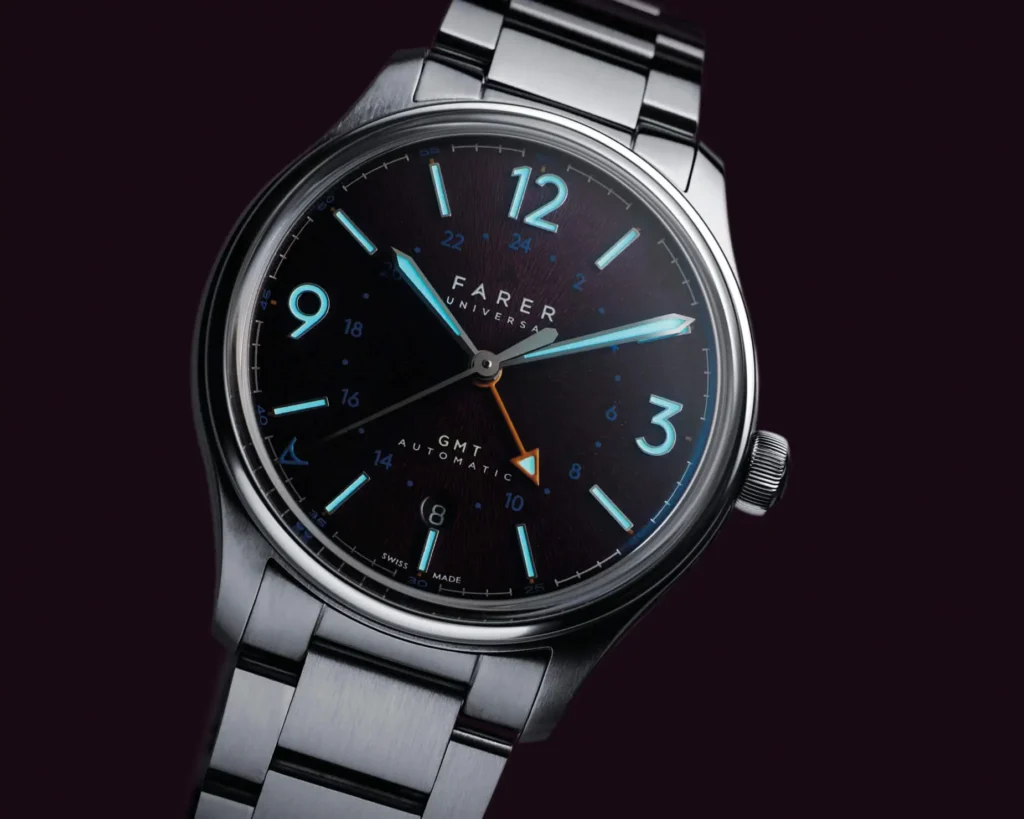
The name Banzare (pronounced ban – zaire) is an acronym for the British Australian (and) New Zealand Antarctic Research Expedition, which occurred between 1929 and 1931. The expedition mapped the Antarctic coastline in two voyages, one of which used the RSS Discovery, which may sound familiar from the Scott and Shackelton expedition.
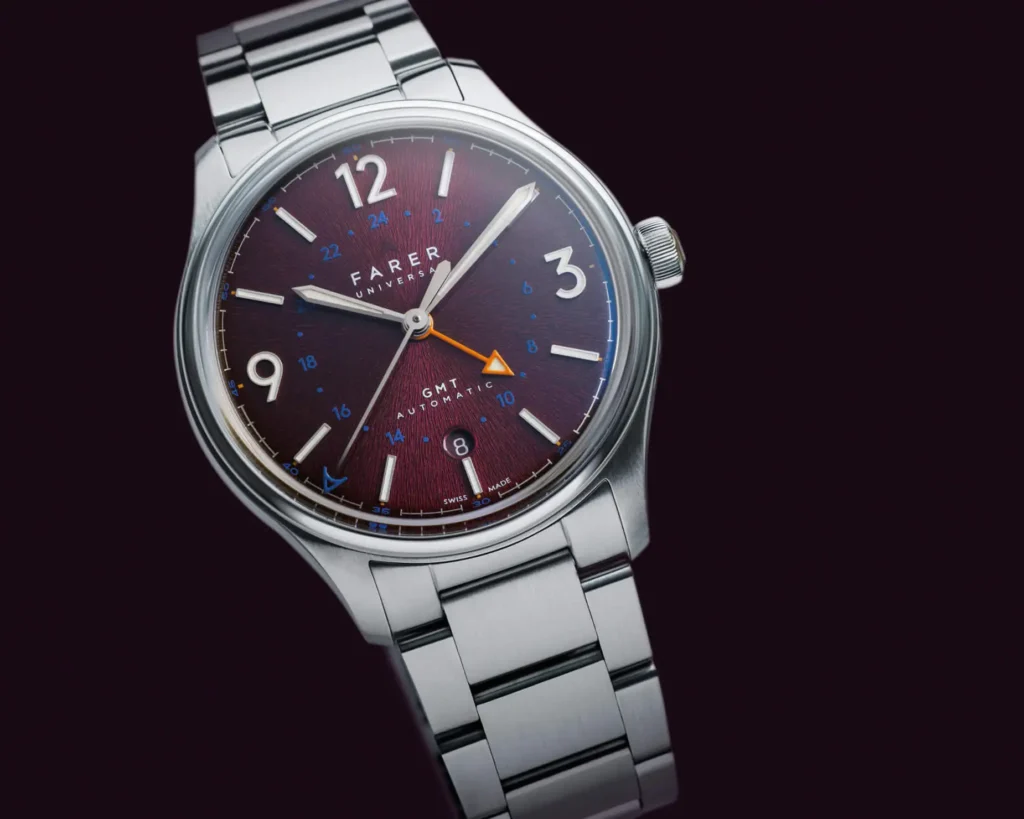
The steel case remains at 39.5mm in diameter, and a mere 10.8mm in thickness with a Sellita SW330-2 automatic movement inside. This provides a 24 hour hand and date complication, though it’s worth noting that this is a ‘caller’ style GMT, meaning the 24 hour hand is slaved to the hour hand. Just 150 units of the Banzare will be produced and the watch is priced from $1,465, though a variety of strap and bracelet options are available at a cost. Farer

